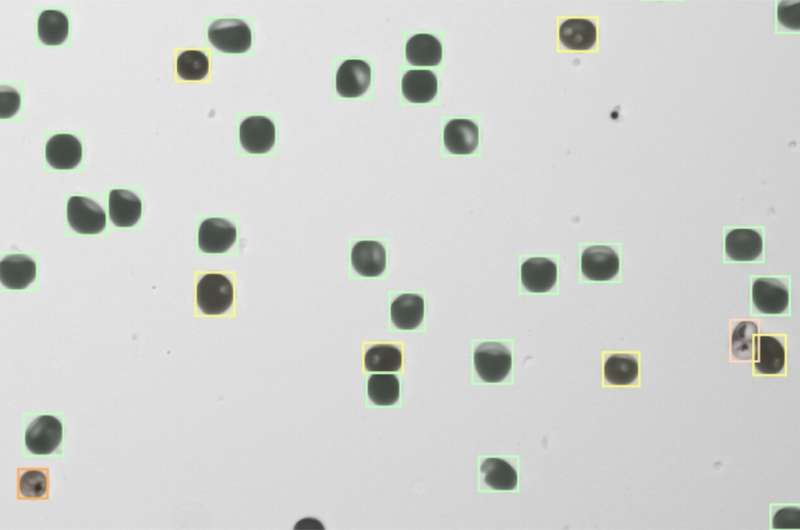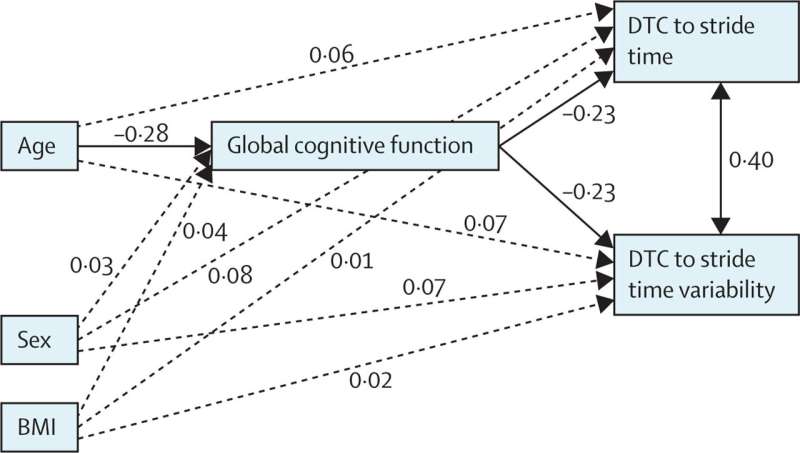
Plasmodium falciparum, the parasite that reasons the deadliest type of malaria in people, is a grasp evader, and has dodged all makes an attempt at an efficient and sturdy vaccine. Now, the usage of a complicated manner that characterizes how antibodies reply to the entire parasite’s kind of 5,400 proteins, researchers at Chan Zuckerberg Biohub–San Francisco (CZ Biohub SF) and UC San Francisco (UCSF) have created the primary high-resolution map of the human immune reaction to P. falciparum, providing perception into what makes this parasite this kind of power pathogen.
In a find out about revealed in eLife on March 10, the researchers hired a complicated strategy to wreck down the proteins that make up P. falciparum into the items known via our immune device, after which uncovered them to blood from 198 Ugandan adults and kids. The effects confirmed that antibodies bind to many P. falciparum areas that don’t generate a long-lived antibody reaction, an obvious “diversion tactic” that forces the immune device into producing shorter-lived responses.
“Malaria is a certified on the subject of immune evasion,” stated CZ Biohub SF President Joe DeRisi, co–senior creator of the find out about. “However relatively than the usage of stealth, our new findings counsel that the malaria parasite is mainly throwing up a fireworks display that distracts the immune device, maintaining it chasing objectives that in the long run don’t seem to be useful for growing long-term coverage.”
An advanced enemy
As for why a sturdy malaria vaccine has been so demanding to return via, mavens level to the complexity of the parasite’s lifestyles cycle. P. falciparum adjustments profoundly because it strikes during the human frame, first gliding during the bloodstream like a single-celled trojan horse after which multiplying in cells of the liver earlier than exploding into the circulatory device to again and again consume the contents of crimson blood cells as gasoline to multiply.
The parasite could also be genetically advanced, that includes loads of proteins considered devoted to immune evasion. The proteins of the parasite additionally function huge numbers of easy repeated sequences that experience baffled scientists for many years.
Within the face of this kind of subtle enemy, it is most likely no longer unexpected that each our herbal immune responses and efforts to create a vaccine fall quick. Simplest with many repeat exposures throughout their lifetimes do folks in areas of malaria transmission prevent turning into unwell when inflamed with the parasite—and once in a while even that isn’t sufficient.
The lengthy time-frame to broaden immunity leaves kids in particular in danger. What is extra, hard-won immunity wanes briefly—individuals who go away spaces of excessive transmission are prone to lose their coverage and get unwell once more once they go back.
Those demanding situations to growing herbal immunity have transferred to vaccine efforts. The vaccine referred to as RTS,S, the primary to be licensed for malaria, calls for a sequence of 4 photographs and remains to be simplest about 30% efficient in opposition to critical illness, and the safety it confers dwindles after only a few months.
“There is a lot we simply have no idea about how immunity to malaria develops,” stated Bryan Greenhouse, a professor of drugs at UCSF and co–senior creator of the brand new paper. “That is largely because of a loss of gear to comprehensively signify the immune device’s reaction. The brand new strategies we have now advanced right here, despite the fact that, will lend a hand shut that hole.”

Mapping the immune reaction
To higher perceive why it is so demanding to broaden malaria immunity, the Biohub SF and UCSF researchers leveraged a formidable generation known as PhIP-Seq, which allowed them to investigate within the laboratory how the immune programs of folks uncovered to P. falciparum have reacted to it.
The manner concerned taking the entire kind of 5,400 proteins that make up the P. falciparum parasite—the parasite’s “proteome”—and slicing them into loads of 1000’s of chunks, approximating the size our immune device works on when looking for items of pathogens to focus on. The researchers then engineered viruses to show each and every of those tiny chunks—like squaddies waving the flag of an opposing military—and combined them in laboratory dishes with the blood of analysis members.
“What we have now achieved is to create a library of all of the elements of all of the proteins malaria may just display to our immune device,” stated DeRisi, additionally a professor of biochemistry and biophysics at UCSF. “We will see precisely what our immune device sees and take a look at to determine how it is responding.”
Now the researchers may just analyze which items of the parasite caused antibodies in human blood to combat off the illness. If the immune device has encountered a bit earlier than and produced antibodies, then the antibodies will have to display reactivity to these chunks within the PhIP-seq platform.
As anticipated, samples accumulated from a keep watch over crew of U.S. adults, who, for essentially the most section, had most definitely by no means been uncovered to malaria, confirmed little or no reactivity to protein chunks from the parasite. But if the group checked out blood donated via Ugandans, they seen fascinating patterns.
The blood of Ugandans contained antibodies to many elements of the malaria parasite however maximum recurrently to protein chunks dubbed “repeat parts.” Repeat parts are spaces of a protein the place the amino acid sequences that make it up repeat time and again and are concept to serve little goal within the protein’s serve as.
Interestingly, the reaction to copy parts depended closely on publicity. Ugandan kids residing with extraordinarily excessive malaria publicity—a mean of 49 occasions a yr via bites from inflamed mosquitoes—confirmed about two times as a lot reactivity to many of those repeat parts than kids who lived in spaces of reasonable publicity—5 inflamed bites according to yr.
However reactivity to a few of these repeat parts waned with time greater than reactivity to non-repeated areas. The stark distinction means that whilst antibodies to those repeat parts dominate the immune reaction to malaria, this reaction is fleeting and will disappear extra briefly than responses to non-repeated areas.
“The ones repeats do not have a tendency to be superb objectives on the subject of making a long-term protection,” stated Madhura Raghavan, a postdoctoral pupil in biochemistry and biophysics at UCSF and lead creator of the brand new find out about. “Immune sources are restricted, and in relation to malaria our our bodies appear to be making a significant miscalculation in what they are focused on to create herbal immunity.”
DeRisi agreed, including, “Our immune device jumps into motion to care for those decoys. It is this kind of distraction that the frame misses the chance to broaden a protection that might in reality be useful the following time round.”
The findings most probably end up crucial lesson for vaccine construction, which in most cases depends upon mimicking the frame’s personal immune protection, with out essentially comparing its effectiveness. Certainly, the RTS,S vaccine makes use of a P. falciparum repeat part as its goal—a conceivable cause of its low sturdiness.
Armed with their new library of the P. falciparum proteome, Biohub researchers plan to stay trying out immune responses to malaria in Uganda, having a look subsequent at how the ones responses trade through the years and with other ranges of publicity. Further information, they be expecting, will in the end information them to precise elements of the parasite proteins that may be key to triggering a more practical immune reaction by means of vaccination.
“Sadly, malaria is just an ordinary a part of on a regular basis lifestyles for many of us and immunity is the one factor maintaining them from being frequently unwell or death,” Greenhouse stated. “It’s important we stay running to remember the fact that immunity higher if we need to have an opportunity at growing an efficient, life-saving vaccine.”
Additional information:
Madhura Raghavan et al, Antibodies to repeat-containing antigens in Plasmodium falciparum are exposure-dependent and short-lived in kids in herbal malaria infections, eLife (2023). DOI: 10.7554/eLife.81401
Equipped via
Chan Zuckerberg Biohub
Quotation:
An age-old combat: Scientists discover what makes malaria this kind of wily foe (2023, March 17)
retrieved 26 March 2023
from https://medicalxpress.com/information/2023-03-age-old-scientists-uncover-malaria-wily.html
This file is topic to copyright. Excluding any honest dealing for the aim of personal find out about or analysis, no
section is also reproduced with out the written permission. The content material is equipped for info functions simplest.
Supply Via https://medicalxpress.com/information/2023-03-age-old-scientists-uncover-malaria-wily.html



